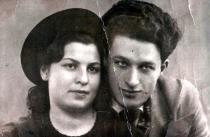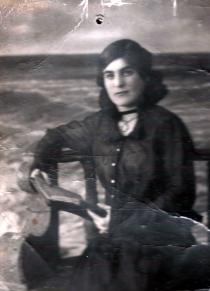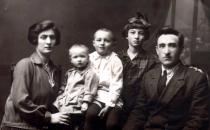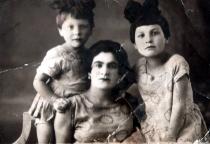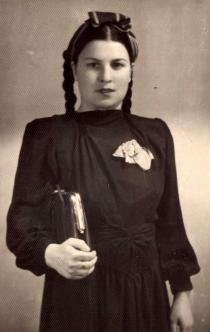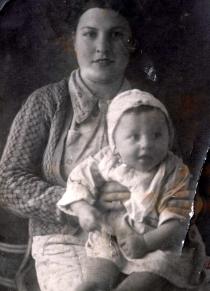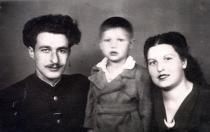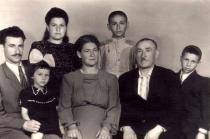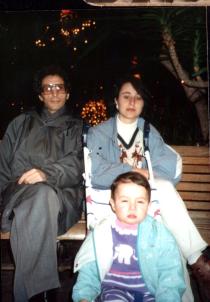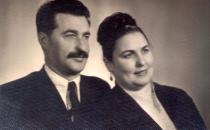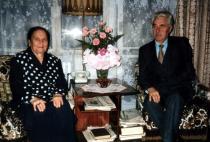This is a picture of my husband's family, taken during our visit to his parents in Khmelnitskiy in 1951. I took this picture, which is why I?m not in the photograph.
In December 1941 my husband finished the artillery school and was sent to a military unit. In the army he became a member of the Communist Party. He was wounded for the first time in 1943.
In November 1944 Grigori was wounded for the second time in battles near Koenigsburg. He had multiple missile wounds on his head, eye and left arm. He stayed in a field hospital near Koenigsburg. He had a bullet removed from his arm, but the wound developed into gas gangrene. He had to have his arm amputated. He was put into a tent with 21 other patients with gas gangrene. He was the only survivor. He was sent to a hospital in Smolensk, Russia [300 km from Moscow] where he had a splinter removed from his head. Another splinter was removed from his eye in Kiev Regional Hospital in 1948. My husband finished the war with the rank of Captain of Artillery, an invalid of grade 1. After he was released from hospital in Smolensk he went to his parents in Khmelnitskiy. My son and I went there, too. My mother and sister stayed in Tashkent. My sister was a student, and my mother didn't want to leave her alone. We stayed with my husband's parents. This was in 1945.
I finished four years at the Medical College in Tashkent, but I left in a hurry and didn't take any documents from there with me. It took me two years to have my documents sent to Ukraine from Uzbekistan. It was a very complicated process. I had to repeat the 4th year. Life in Khmelnitskiy was hard. My husband's parents' house was small and several families lived in it. The houses of their friends and relatives had been destroyed and many of them stayed in Grigori's parents' house after they returned from evacuation. There wasn't enough food and we starved. We couldn't decide what to do next. At that time one of Grigori's fellow soldiers came to see him. He settled down in Uzhgorod after his demobilization. This was in the center of the Subcarpathian region. Before 1918 Subcarpathia belonged to Austro-Hungary and then it became part of the Czech Republic. In 1939 Subcarpathia was occupied by Hungarians again. After the war, in 1945, it joined the USSR. Grigori's friend told us that it was a magnificent town and that life was good there. Grigori obtained a work permit from the military registration office and we went to Uzhgorod.

